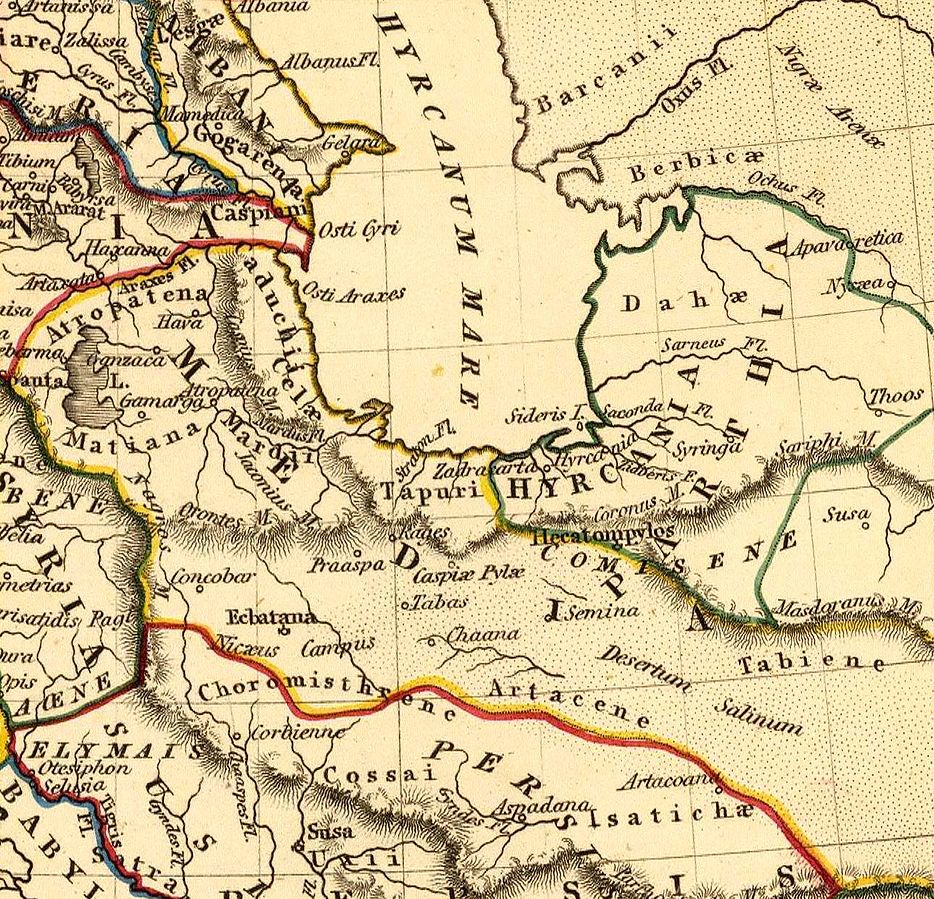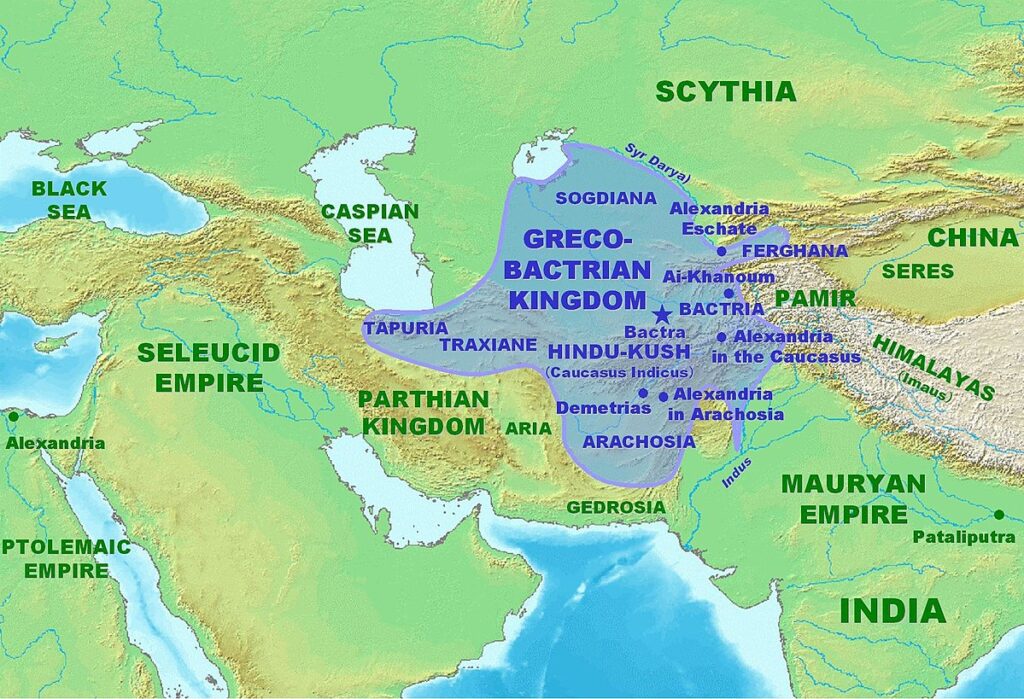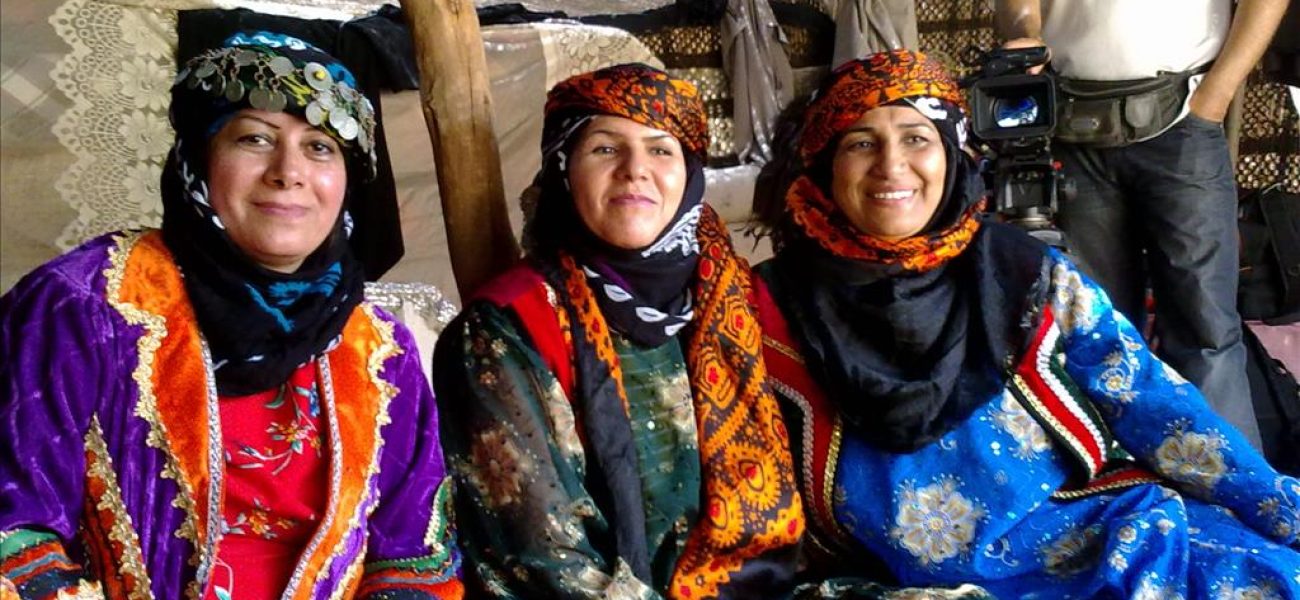In the annals of ancient anthropology, the Tapuris stand as enigmatic figures, shrouded in the mists of time, their presence marked by fleeting mentions in the texts of esteemed historians such as Ptolemy and Arrian. Situated south of the Caspian Sea, in the realm of the Medes, the Tapuris emerge as a fascinating subject of study, offering a tantalizing glimpse into the socio-cultural tapestry of antiquity. In this article, we embark on a journey of discovery, delving into the depths of history to unearth the secrets of this obscure tribe and illuminate their significance in the mosaic of ancient civilizations.
Origins and Geography
Origins
The origins of the Tapuris are deeply intertwined with the complex web of migration, settlement, and cultural diffusion that characterized the ancient Near East. While concrete evidence regarding their origins is scarce, scholars speculate that the Tapuris may have descended from Indo-European tribes that migrated into the region during the Bronze Age. Linguistic and archaeological evidence suggests connections between the Tapuris and other ancient peoples of the Iranian Plateau, such as the Medes, Persians, and Parthians, hinting at shared cultural and linguistic affinities.
The Tapuris likely emerged as distinct ethno-linguistic group within the broader framework of the Medean civilization, carving out their niche in the rugged landscapes south of the Caspian Sea. Over time, they developed unique social, cultural, and economic institutions that distinguished them from neighboring tribes and cultures, forging a sense of identity and cohesion that bound their communities together.
Geography
The geographical territory inhabited by the Tapuris encompassed a diverse range of landscapes, each offering its own challenges and opportunities for human settlement and development. To the north lay the expansive waters of the Caspian Sea, a vital lifeline that provided sustenance through fishing and facilitated trade and communication with distant lands. The fertile plains along the coast of the Caspian Sea served as the agricultural heartland of the Tapuris, where they cultivated crops such as wheat, barley, and millet in the rich alluvial soils.
To the south, the landscape transitioned into rugged mountains and foothills, where herds of cattle, sheep, and goats grazed on the verdant pastures. These mountainous regions offered protection and natural fortifications, enabling the Tapuris to establish fortified settlements and maintain their independence in the face of external threats.
The geographical location of the Tapuris also placed them at the crossroads of ancient trade routes that crisscrossed the Near East, connecting the Mediterranean world with Central Asia, India, and China. This strategic position facilitated the exchange of goods, ideas, and technologies, enriching the cultural and economic life of the Tapuri communities.
The origins and geography of the Tapuris offer valuable insights into the complex interplay between human societies and their natural environment in the ancient Near East. Through their adaptation to diverse landscapes and their interactions with neighboring cultures, the Tapuris forged a unique identity that left an indelible mark on the tapestry of ancient history.
Social Structure and Governance

Social Structure
The social structure of the Tapuris was likely organized along tribal lines, with kinship ties forming the foundation of their communities. Extended families and clans formed the basic units of Tapuri society, providing the framework for social cohesion, economic cooperation, and mutual support. Within these kinship groups, individuals were bound by ties of blood and marriage, fostering a sense of solidarity and belonging.
At the apex of Tapuri society stood chieftains or tribal leaders, who exercised authority over their respective clans or tribes. Leadership positions were often hereditary, passing from father to son, although merit and charisma also played significant roles in the selection of leaders. Chieftains were responsible for maintaining order, resolving disputes, and representing their communities in matters of diplomacy and warfare.
Beneath the chieftains were various strata of society, including warriors, artisans, farmers, and pastoralists. While social mobility may have been limited, individuals could rise in status through acts of valor in battle, successful entrepreneurship, or alliances through marriage. The Tapuris likely valued qualities such as courage, wisdom, and generosity, which earned individuals respect and influence within their communities.
Governance
The governance of the Tapuris was characterized by a blend of centralized authority and decentralized autonomy. While chieftains wielded considerable power within their respective domains, they often operated within a broader framework of Medean kingship or imperial authority. The Medean kings likely exerted influence over the Tapuri tribes through a combination of political alliances, military force, and economic incentives.
Decisions affecting the welfare of the Tapuri communities were made through councils or assemblies, where chieftains and respected elders deliberated on matters of governance, justice, and communal affairs. These assemblies served as forums for consensus-building and conflict resolution, ensuring the participation and representation of diverse interests within Tapuri society.
Justice within Tapuri communities was administered through customary laws and traditions, with disputes settled through mediation, arbitration, or adjudication by village elders or tribal councils. Punishments for wrongdoing may have varied depending on the severity of the offense, ranging from fines and restitution to banishment or even execution in cases of grave crimes.
While the precise mechanisms of Tapuri governance remain speculative, evidence from neighboring cultures and later historical periods provides insights into the political institutions and practices that may have characterized Tapuri society. Regardless of the specifics, the governance of the Tapuris reflected the complex interplay of power, authority, and tradition that shaped the dynamics of ancient Near Eastern societies.
The social structure and governance of the Tapuris were characterized by a blend of kinship-based organization, chieftain leadership, and decentralized decision-making. Through their intricate social networks and institutions, the Tapuris maintained cohesion and stability within their communities while navigating the complexities of interaction with external powers and neighboring tribes.
Top of Form
Economy and Subsistence
The economy of the Tapuris was primarily agrarian and pastoral, shaped by the rich natural resources and diverse landscapes of their homeland south of the Caspian Sea. Their subsistence practices revolved around agriculture, animal husbandry, and trade, providing the foundation for their livelihoods and economic activities.
Agriculture
The fertile plains along the coast of the Caspian Sea served as the agricultural heartland of the Tapuris, where they cultivated a variety of crops suited to the region’s climate and soil conditions. Grains such as wheat, barley, and millet formed the staple diet of Tapuri communities, providing essential carbohydrates and nutrients. Other crops, including legumes, fruits, and vegetables, were also grown to supplement their diet and diversify their agricultural production.
Animal Husbandry
In addition to agriculture, animal husbandry played a vital role in the economy of the Tapuris. Herds of cattle, sheep, goats, and horses roamed the foothills and mountainous regions, where they grazed on the abundant vegetation and provided essential resources such as milk, meat, wool, and hides. Livestock served not only as a source of sustenance but also as a form of wealth and status, with the ownership of large herds symbolizing prosperity and social standing within Tapuri society.
Trade and Commerce
The strategic location of the Tapuris along ancient trade routes facilitated commerce and exchange with neighboring cultures and distant lands. Tapuri merchants engaged in the exchange of agricultural produce, livestock, handicrafts, and other goods with traders from regions such as Mesopotamia, Persia, Central Asia, and the Mediterranean world. Trade routes traversed the rugged landscapes of the Caspian region, connecting the Tapuris to a vast network of markets and commercial centers, where goods were bought, sold, and bartered for profit.
Craftsmanship and Specialization
Within Tapuri society, craftsmen and artisans played a crucial role in the production of goods essential for daily life and trade. Skilled craftsmen produced pottery, textiles, metalwork, and other artifacts using locally available materials and traditional techniques passed down through generations. Specialization in specific crafts or trades allowed artisans to hone their skills and contribute to the economic prosperity of their communities.
Seasonal Patterns and Agricultural Cycles
Like many ancient societies, the Tapuris likely followed seasonal patterns and agricultural cycles dictated by the changing seasons and natural rhythms of the environment. Planting and harvesting seasons determined the timing of agricultural activities, while seasonal migrations of livestock followed patterns of grazing and water availability in different regions. These cyclical patterns shaped the rhythm of life for the Tapuris, influencing their social rituals, economic practices, and cultural traditions.
The economy and subsistence practices of the Tapuris were characterized by a harmonious blend of agriculture, animal husbandry, trade, and craftsmanship, sustained by the bountiful resources of their homeland and the ingenuity of their people. Through their innovative agricultural techniques, skilled craftsmanship, and active participation in trade networks, the Tapuris forged a prosperous and resilient economy that supported their communities and contributed to the cultural and economic vibrancy of the ancient Near East.
Religion and Belief Systems

The religious beliefs of the Tapuris were deeply intertwined with their daily lives, permeating every aspect of their society and culture. While concrete evidence regarding Tapuri religion is limited, we can draw insights from comparative studies of neighboring cultures, archaeological findings, and references in ancient texts to illuminate their spiritual practices and belief systems.
Nature Worship
Like many ancient peoples, the Tapuris likely worshipped a pantheon of deities associated with natural phenomena, celestial bodies, and elemental forces. The fertile plains, majestic mountains, and vast expanses of the Caspian Sea would have been regarded as sacred manifestations of divine power, revered and respected by Tapuri communities. Deities personifying the sun, moon, stars, earth, water, and sky may have been venerated through rituals, prayers, and offerings, seeking their favor and protection.
Fertility Cults
Agriculture played a central role in Tapuri society, and fertility rituals and cults dedicated to ensuring bountiful harvests would have been prevalent. Goddesses associated with fertility, agriculture, and childbirth may have been worshipped as patrons of agriculture, presiding over the cycles of planting, growth, and harvest. Offerings of grain, fruits, and livestock may have been made to appease these deities and ensure the prosperity and abundance of Tapuri communities.
Ancestor Worship
The Tapuris likely revered their ancestors as spiritual guardians and mediators between the mortal realm and the divine. Ancestor worship would have involved rituals honoring deceased relatives, offerings of food, drink, and incense at ancestral shrines, and the commemoration of important familial events such as births, marriages, and deaths. Ancestors were believed to exert influence over the affairs of the living, offering guidance, protection, and blessings to their descendants.
Shamanism and Divination
Shamanic practices, involving trance states, spirit journeys, and communication with the spirit world, may have been prevalent among the Tapuris. Shamans, or spiritual intermediaries, would have played essential roles in healing, divination, and ritual ceremonies, acting as conduits between the human and supernatural realms. Divination techniques such as astrology, augury, and dream interpretation may have been employed to discern the will of the gods, predict future events, and guide decision-making within Tapuri society.
Syncretism and Cultural Exchange
As a crossroads of ancient civilizations, the Tapuris would have been exposed to a diverse array of religious beliefs and practices through trade, migration, and cultural exchange. Elements of Mesopotamian, Persian, Greek, and Central Asian religious traditions may have influenced Tapuri religion, leading to syncretism and the assimilation of foreign deities, rituals, and myths into their own belief systems.
The religious beliefs and belief systems of the Tapuris were multifaceted and dynamic, reflecting their close relationship with the natural world, their ancestral heritage, and their interactions with neighboring cultures. While much remains speculative, the evidence suggests a rich tapestry of spiritual beliefs and practices that served to bind Tapuri communities together, providing meaning, purpose, and guidance in the face of life’s uncertainties.
Interactions with Neighboring Cultures
The Tapuris occupied a strategic geographical position south of the Caspian Sea, placing them at the crossroads of ancient trade routes and cultural exchange networks. As a result, they engaged in dynamic interactions with neighboring cultures, including the Persians, Babylonians, Greeks, and Central Asian peoples, shaping their own identity and influencing the broader cultural landscape of the ancient Near East.
Diplomacy and Alliance
The Tapuris likely engaged in diplomatic exchanges and formed alliances with neighboring powers to navigate the complex political landscape of the ancient Near East. Treaties, marriage alliances, and political marriages may have been employed to secure peace, establish trade relations, and forge strategic partnerships. By aligning themselves with powerful states such as the Medes, Persians, or Babylonians, the Tapuris could bolster their own security and gain access to valuable resources and markets.
Trade and Commerce
Trade played a crucial role in the interactions of the Tapuris with neighboring cultures, facilitating the exchange of goods, ideas, and technologies. The Tapuris likely participated in regional trade networks that connected the Mediterranean world with Central Asia, India, and China, importing luxury goods such as textiles, spices, precious metals, and exotic commodities, while exporting agricultural produce, livestock, and artisanal products. Trade routes traversed the rugged landscapes of the Caspian region, passing through Tapuri territory and linking them to distant markets and commercial centers.
Cultural Exchange
The Tapuris were exposed to a diverse array of cultural influences through their interactions with neighboring peoples, leading to the assimilation of foreign customs, traditions, and beliefs into their own culture. Elements of Mesopotamian, Persian, Greek, and Central Asian cultures may have permeated Tapuri society, manifesting in language, religion, art, architecture, and material culture. Cultural exchange fostered innovation, creativity, and adaptation within Tapuri communities, enriching their cultural heritage and broadening their worldview.
Conflict and Conquest
While diplomacy and trade were essential components of Tapuri interactions with neighboring cultures, conflicts and conquests also shaped their relations with external powers. The Tapuris may have engaged in territorial disputes, border skirmishes, and military campaigns with neighboring tribes or imperial powers seeking to expand their influence and control over the region. Conquest by foreign powers such as the Achaemenid Persians or the Seleucids may have resulted in the subjugation of Tapuri communities, leading to changes in governance, administration, and cultural assimilation.
Cultural Resilience and Identity
Despite the influence of neighboring cultures, the Tapuris maintained a distinct cultural identity shaped by their unique history, geography, and traditions. Cultural resilience allowed Tapuri communities to adapt to changing political and social dynamics while preserving elements of their heritage and identity. Through a process of selective acculturation, the Tapuris integrated foreign influences into their own culture, creating a syncretic blend that reflected the diversity and complexity of the ancient Near East.
The interactions of the Tapuris with neighboring cultures were multifaceted and dynamic, encompassing diplomacy, trade, cultural exchange, conflict, and conquest. These interactions played a crucial role in shaping Tapuri society and culture, contributing to their economic prosperity, cultural enrichment, and political resilience in the ancient Near East.
Legacy and Influence
The legacy of the Tapuris reverberates through the annals of ancient history, leaving an indelible mark on the cultural, economic, and political landscape of the ancient Near East. While their existence may be shrouded in the mists of time, the echoes of their civilization endure through the following aspects:
Cultural Synthesis
The Tapuris occupied a strategic crossroads of ancient civilizations, facilitating the exchange of ideas, technologies, and cultural practices between diverse peoples. Through their interactions with neighboring cultures, the Tapuris contributed to a process of cultural synthesis and hybridization, blending elements of Mesopotamian, Persian, Greek, and Central Asian traditions into their own unique cultural tapestry. This cultural fusion enriched the artistic, architectural, linguistic, and religious heritage of the ancient Near East, leaving a lasting imprint on subsequent civilizations.
Economic Prosperity
The Tapuris’ strategic location along trade routes connecting the Mediterranean world with Central Asia and beyond endowed them with economic significance and prosperity. Their participation in regional trade networks facilitated the exchange of goods, fostering economic growth, and prosperity within Tapuri communities. Through trade, the Tapuris acquired luxury commodities, raw materials, and technological innovations from distant lands, stimulating commerce, craftsmanship, and entrepreneurship. The legacy of Tapuri trade routes endured long after their disappearance, shaping the economic geography of the ancient Near East and facilitating the flow of goods and ideas across continents.
Political Dynamics
While the Tapuris may have been overshadowed by larger empires such as the Achaemenid Persians or the Seleucids, their geopolitical significance should not be underestimated. Tapuri territory served as a buffer zone between competing powers, influencing regional politics, diplomacy, and military strategy. The Tapuris’ ability to maintain a degree of autonomy and independence within this volatile environment speaks to their political resilience and adaptability. Their interactions with neighboring powers contributed to the ebb and flow of empires, shaping the geopolitical landscape of the ancient Near East.
Cultural Heritage
Despite the paucity of direct evidence, the cultural legacy of the Tapuris endures through archaeological findings, linguistic connections, and references in ancient texts. Archaeological sites scattered across the Caspian region offer glimpses into Tapuri material culture, architecture, and daily life, shedding light on their technological achievements and artistic endeavors. Linguistic affinities between Tapuri and other Iranian languages provide clues to their ethnic and cultural heritage, while references in ancient texts such as those by Ptolemy and Arrian offer tantalizing hints about their historical significance.
the legacy and influence of the Tapuris extend far beyond the confines of their historical existence, permeating the cultural, economic, and political fabric of the ancient Near East. Through their contributions to cultural synthesis, economic prosperity, and geopolitical dynamics, the Tapuris played a significant role in shaping the course of history, leaving an enduring legacy that continues to intrigue and inspire scholars and enthusiasts alike.
The Tapuris remain a tantalizing enigma, their story woven into the fabric of ancient history yet tantalizingly elusive. Through the fragments of evidence scattered across the annals of antiquity, we catch fleeting glimpses of their existence, piecing together a mosaic of culture, society, and civilization. As we continue to unravel the mysteries of the past, the enigmatic legacy of the Tapuris serves as a reminder of the boundless depths of human history, waiting to be discovered and explored by future generations of scholars and adventurers alike.




